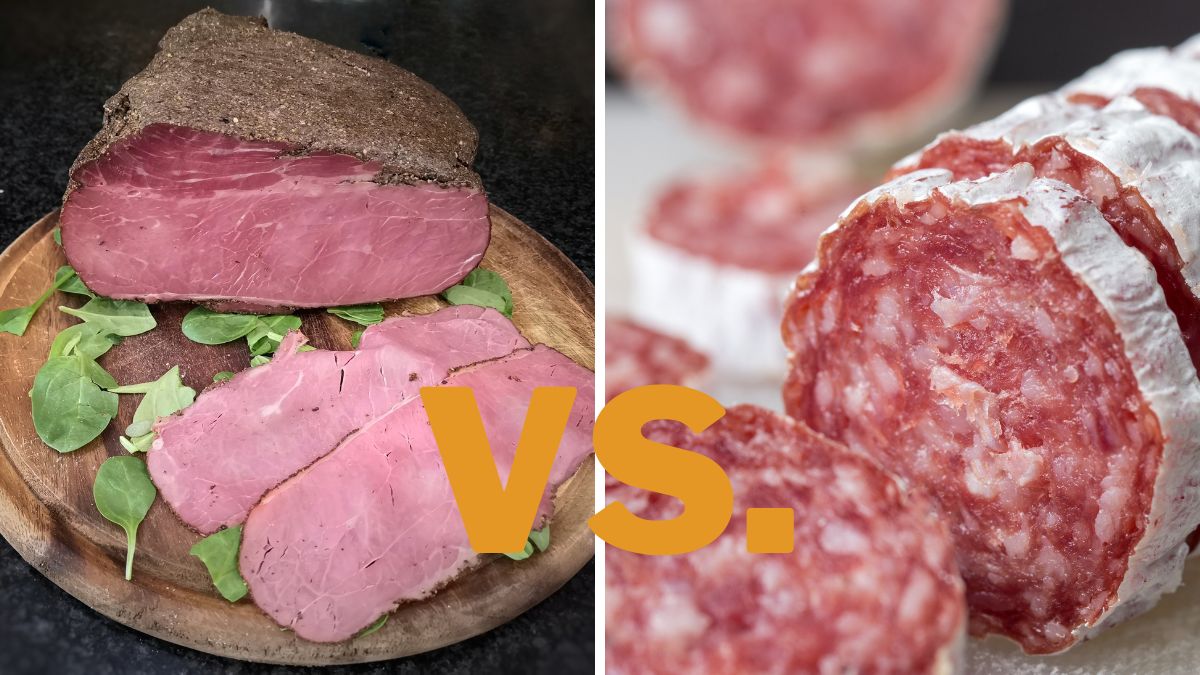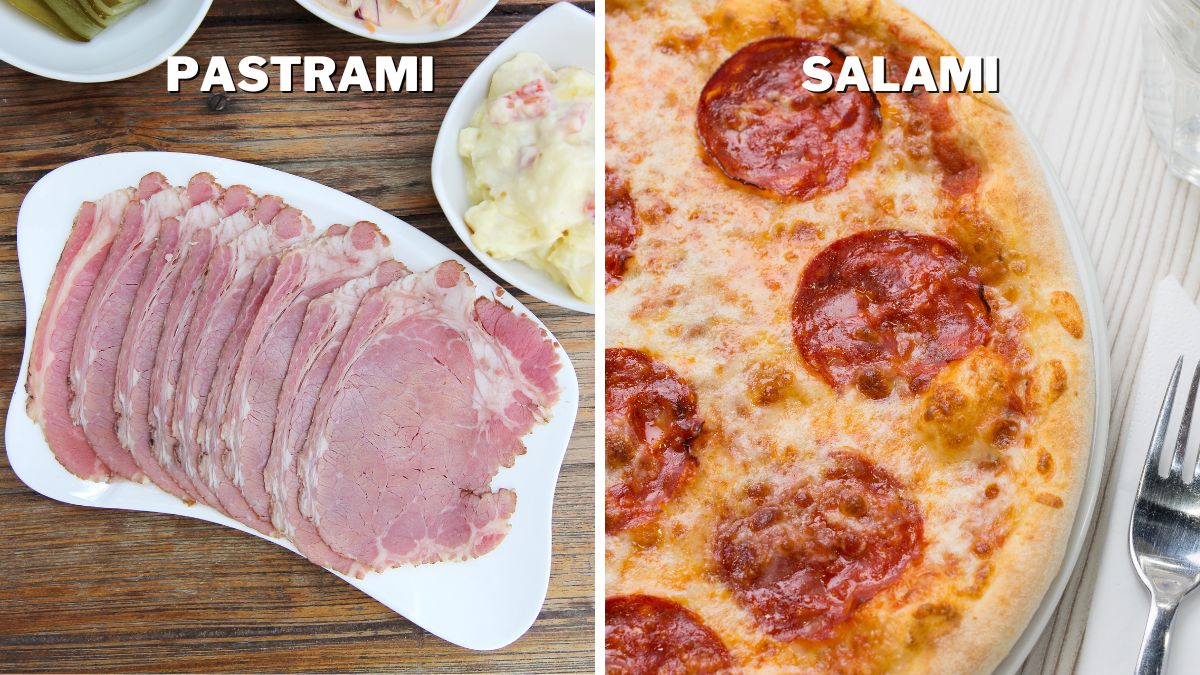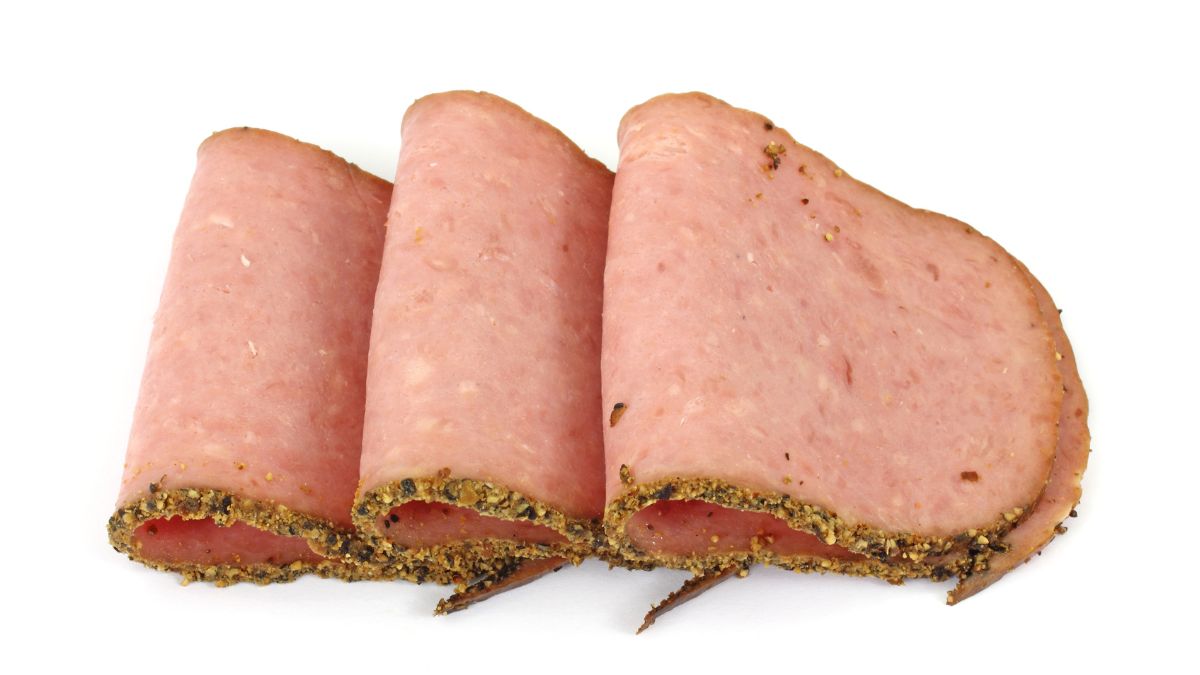Pastrami vs. Salami: Differences & Which Is Better?

As someone who loves both pastrami and salami, I know the importance of knowing the differences between them. Now, don’t get me wrong, you will definitely enjoy them, but there are some things that are worth knowing, if for nothing else, then to do them justice. I know that it isn’t a question that keeps you up at night, but you may come to a situation where you could use some info about these two delicacies. So, what are the differences between pastrami and salami?
Pastrami is typically made from beef brisket that has been brined, seasoned with a spice blend, and smoked. Salami, on the other hand, is usually made from ground pork or beef mixed with spices and then fermented and dried.
Pastrami and salami are both types of deli meats, but they are quite different in terms of flavor, texture, and ingredients. Although you will probably love them both, not knowing their differences could cause you to miss out on their deliciousness because of not knowing where to use which. So, stick around till the end of this article because I will tell you everything you need to know about these two delicacies.
Preparation and Ingredients
The preparation process is where the differences between pastrami and salami begin. Pastrami is made from beef, typically the brisket or round cut. The meat is first marinated in water, salt, and sugar mixture to which various spices are added. These spices include coriander, garlic, and black pepper.
After marinating, more spices, including paprika, are rubbed on the meat. The meat is then smoked or roasted, resulting in tender, smoky, and flavorful meat. This smoky dimension is what I love most about pastrami, and it is the reason why pastrami sandwiches are a regular part of my weekly menu.
Salami is another big love of mine. It is typically made from pork, but it isn’t unusual to find it made with beef or other meats. The meat is finely ground and mixed with various spices and seasonings, including garlic, fennel, and red pepper flakes, to make salami.
The mixture is then encased and aged for a few weeks to several months. The aging process gives the salami its signature tangy flavor and firm, slightly chewy texture.
Taste
Before I get into detail on the flavor, let me just say that both pastrami and salami are absolutely delicious and very satisfying.
While pastrami has a bold, smoky, spicy flavor, salami is tangy and slightly sour with just a hint of spice. Pastrami is also tenderer than salami, while salami is firmer, and chewier.
Both have that typical cured meat note you know, the smoky and salty one, but it is more expressed with pastrami. What I particularly love about each is the pastrami smokiness and the salami tanginess.
Uses

Both pastrami and salami are very popular types of cured meat and are widely used in restaurants, delis, as well as households. I have them at home most of the time, and if I don’t have them both, I sure have one or the other.
If there is something that pastrami is famous for, it is the pastrami sandwich, but you can also use it to enrich scrambled eggs or other breakfast meals, cold plates, or add them to a dish that could use some smokiness. Still, pastrami is not very popular cooked as it doesn’t do well when heat-processed. I tried it once as a pizza topping, and it didn’t go well.
Salami, however, does exceptionally well when cooked, especially as a pizza topping or as a flavor-giver to baked veggies, pasta dishes, or omelets. Its tangy, slightly sour flavor goes delightfully with cheeses, fruits, and crackers, making it a famous cold plate ingredient. The trick is to slice it thinly because it is at its most flavorful that way, and the same goes for pastrami too.
Both are versatile and fit well into many combinations. If you want your deli meat cooked, go with salami, and if you want it as is, go with pastrami.
Nutrition
Since pastrami is typically made from beef, it is a good source of protein. However, it is also high in sodium. If you have it regularly, you may want to pace yourself with it. [1]
Salami is typically made from pork, so it is also a good source of protein but is also relatively high in calories and fat. Salami is even higher in sodium than pastrami. Therefore, the sad news is you need to take it in moderation, which can be very hard since it is so delicious. [2]
A serving of either can account for about 30% of sodium of your daily sodium intake.
Varieties

Pastrami and salami are pretty much standardized cured meats but still vary depending on where they are made. You can find them pretty much everywhere in the world, and each culture has its way of making them.
The spices and seasonings vary, so you may notice that different pastrami or salami varieties have different aromas and different dominant flavors. Some pastrami types are drier than others since they are left to age differently. Also, in some parts of the world, for example, Italy, salami is made with coarser bits of meat.
Additionally, while salami is usually made of pork, some cultures make it from beef or other meats.
There is also turkey pastrami, which is delicious, but it isn’t authentic and is regarded as a healthier version of regular pastrami.
Still, even though there are variations, these meats don’t vary significantly, and pastrami is still pastrami, and salami is still salami. You will definitely know which is which, no matter the variation you try.
Both can be served in many ways, though neither has a traditional way of serving. These cured meats are meant for you to have them as you like best. Still, pastrami’s specialty is sandwiches and cold plates, and salami’s department is pasta and pizza.
Depending on my mood, I use one or the other, so feel free to have them as you see fittest.
Final Thoughts: Which Is Better, Pastrami or Salami?
It is impossible to say that one is better than the other, as both are delicious and quite different. It all boils down to personal preference and what you are in the mood for. If you want something smoky, robust, and savory, go with pastrami, and if you are craving something tangy, sour, and chewy, salami is for you.
If you feel creative and want to cook something rich, use salami, and if you want a cold snack to pair with wine, choose pastrami. If you want to pair your snack with delicious blue cheese, salami should be your choice.
